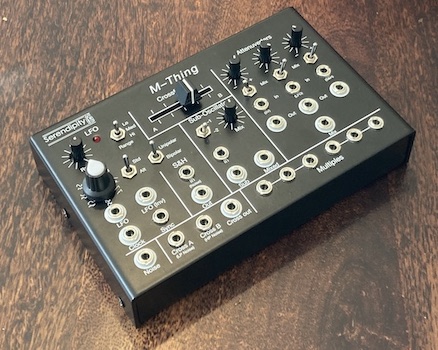
M-Thing
Email me at serendipity.synth@gmail.com with any questions or comments, or if you are interested in obtaining a device.

|

|
The Semi-Modular Thing
The Semi-Modular Thing, in future simply the M-Thing, is a small device designed to work alongside a semi-modular synth (such as the Moog Mother-32, or Arturia Minibrute) and provide additional utilities, modulation sources, and mixing. Available in a folded aluminium case, or as a 32HP Eurorack module.
For the standalone version, you will need a standard 12V, centre-positive power supply for this, 500mA is ok, 1A is better since there are 2 power only USB sockets on the back that you might want to use for a MIDI controller or other small device.
M-Thing Specifications
|
|
Here is a step-by-step demonstration of how the M-Thing can add a bit extra to a Mother 32, before playing along with a D-Thing/DFAM pair, then a Matriarch, and finally a Roland System 100.
This demo of the prototype examines the individual functions in more detail.